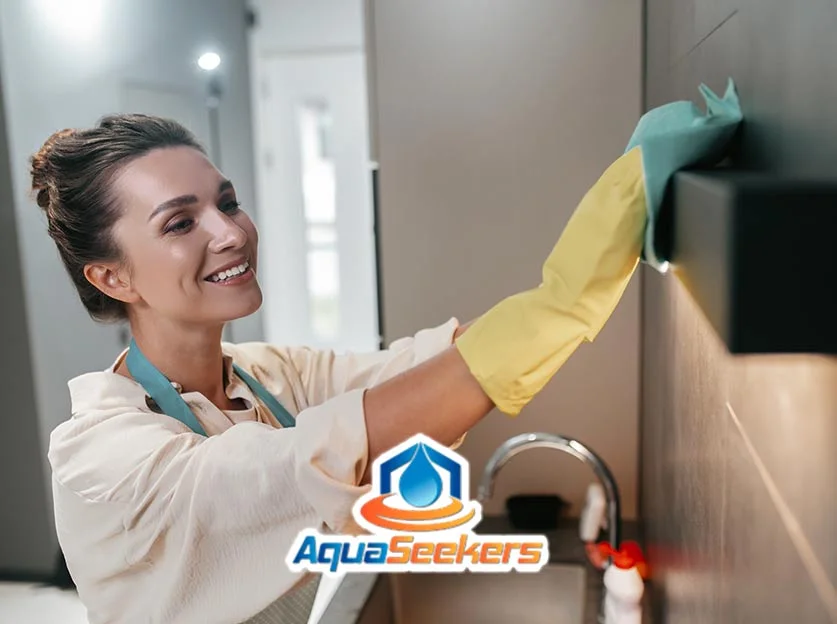Draperies in Distress: A Guide to Professional Drapery Cleaning
Drapes are essential pieces of every house and business. They provide insulation and privacy while enhancing the appearance of your spaces. However, you usually don’t remember them until you casually pass them and smell the dust. That’s where you think: “Maybe it’s time for some drapery cleaning.”
Most people think of simply putting the drapes in the washing machine and leaving them there. However, due to their length and size, most drapes and curtains don’t fit into the washing machine, especially commercial ones that are sometimes made of plastic or enhanced with fire retardant features that increase their weight. Hence, you may think going to the laundromat will match a professional service, but this is not close to the actual professional cleaning.

Drapers and curtains are made from a dozen different fabrics, and not all are suitable for washing machines. Large amounts of water and abrasive detergents may damage them. Even if they ended intact, the washing machine will probably shrink them, and you may have difficulty drying them to remove the shrinks. Thus, getting a professional cleaning company to clean your draperies will ensure they’re always dandy while saving you the hassle.
How do cleaning and restoration companies take care of your drapers?
The first thing professionals will do is determine the fabric of your drapery to choose the best cleaning method and ensure it remains safe and sound. Professionals typically use three methods for drapery cleaning depending on the fabric: dry cleaning, hot water, and steam cleaning.
1. Steam cleaning
Deep cleaning services usually use steamers to clean curtains that are too heavy to take down, such as damask, velvet, or silk. These curtains are cleaned on-site. Professionals use a steamer and start from top to bottom, ensuring they maintain it at the appropriate distance to prevent excessive moisture from damaging the fabric. Likewise, these experts wear protective clothing to avoid burns.
A professional tile and grout cleaning company will also remove harmful bacteria that can cause wear and tear over time, extending the lifespan of your floor and other surface tiles and preventing costly replacements. This is especially important for business owners, as re-flooring may take days to complete, leading to operations closing or delays while the job is done.
2. Hot water extraction
This cleaning method is ideal for drapes that resist large amounts of water without issues, such as cotton, nylon, polyester, and other synthetic fibers, removing dust and dirt while caring for the fabric conditions. Experts will use professional cleaning solutions with hot water to remove stubborn stains and dirt build-up. However, it requires more time to allow the drape to dry thoroughly.
3. Dry cleaning
Most drapes only allow for dry cleaning to remove the odor, soil, pollen, smoke, and dust and prevent shrinks caused by washing machines or poorly done steamings. Dry-drapery cleaning involves injecting a special solvent into the fabric under pressure and then extracting it. If there are water bone stains, they will mix water and soap with the solvent.
Professionals usually use a synthetic hydrocarbon solvent, which is non-flammable, to prevent accidents. However, this solvent cannot be used on fabrics and dyes prone to fade or bleed. Cleaning and restoration companies use a gentler solvent when your drapes are prone to these issues.
Using these methods, a professional cleaning company will ensure your curtains are spotless and last for years without fading, unraveling, or shrinking.
What can you expect from a professional cleaning company for draperies?
As we mentioned above, the process of drapery professional cleaning is more complex than simply putting all your drapes and curtains in the washer. The process begins with a thorough inspection to ensure fabric safety during cleaning while removing all debris, dust, and pet dander in your drapes. It also involves several other steps to guarantee your satisfaction.
1. Initial Inspection
Cleaning and restoration companies will asses the fabric type, the dirt extent, particularly stubborn stains such as oils or blood, and if there are any, like water damage, wear, or fabric fading, to determine the best cleaning method, equipment, and products to use on them.
2. Pretreatment
Most professionals pre-treat drapes and curtains before cleaning them to break down dirt, allergens, and stains, making the subsequent cleaning more effective and less tiresome.
3. Cleaning
As seen above, drapery cleaning will vary depending on the fabric. Professional cleaners will use dry, hot water, or steam cleaning to clean the drapes and prevent color fading, shrinkage, or other damage.
4. Pressing
Once your drapes are clean, professional cleaning services will press and steam them to remove any shrinkage that may have occurred during the cleaning, restoring them to their original shape. This process ensures your drapes are polished and drape well once you rehang them.
5. Final Inspection
After pressing, a professional cleaning company will inspect your drapes to ensure they are free of shrinkage, stains, or damage. If everything is good, they’re ready for pick-up!




